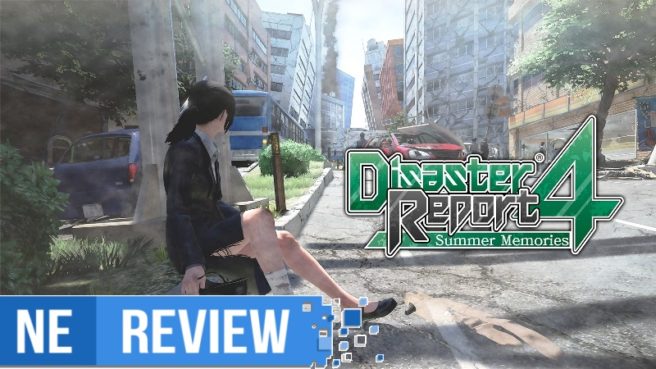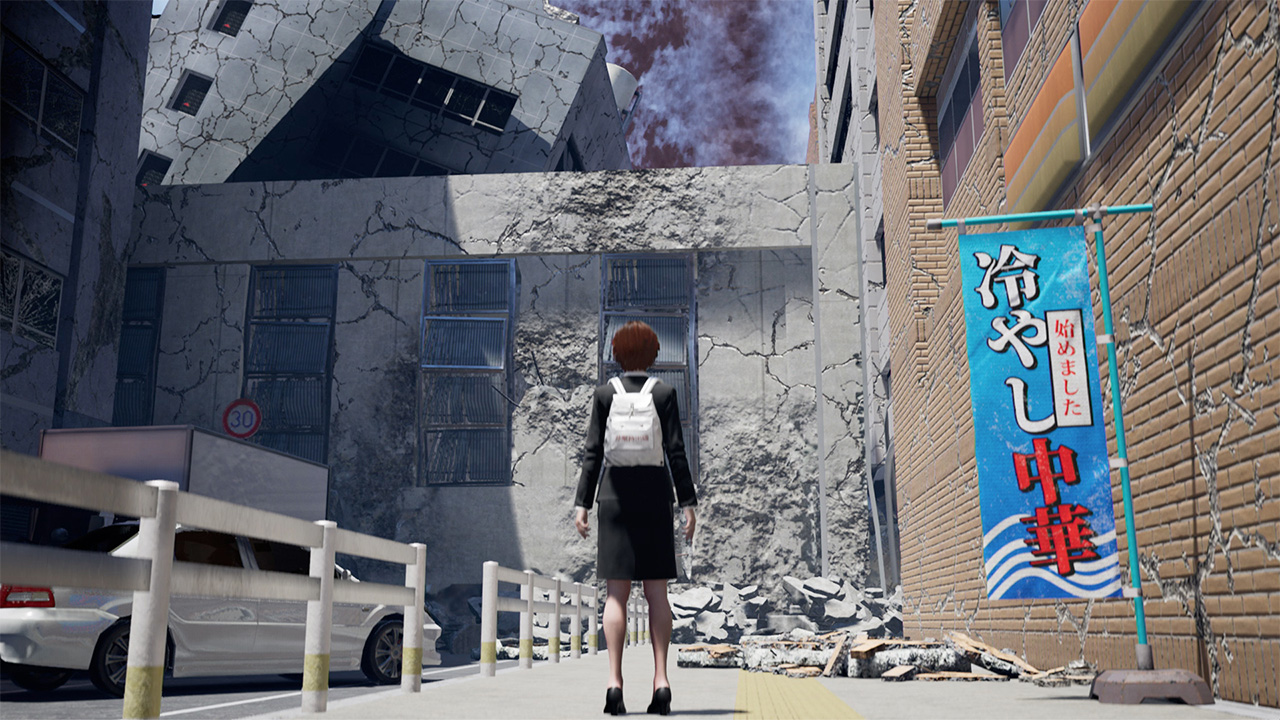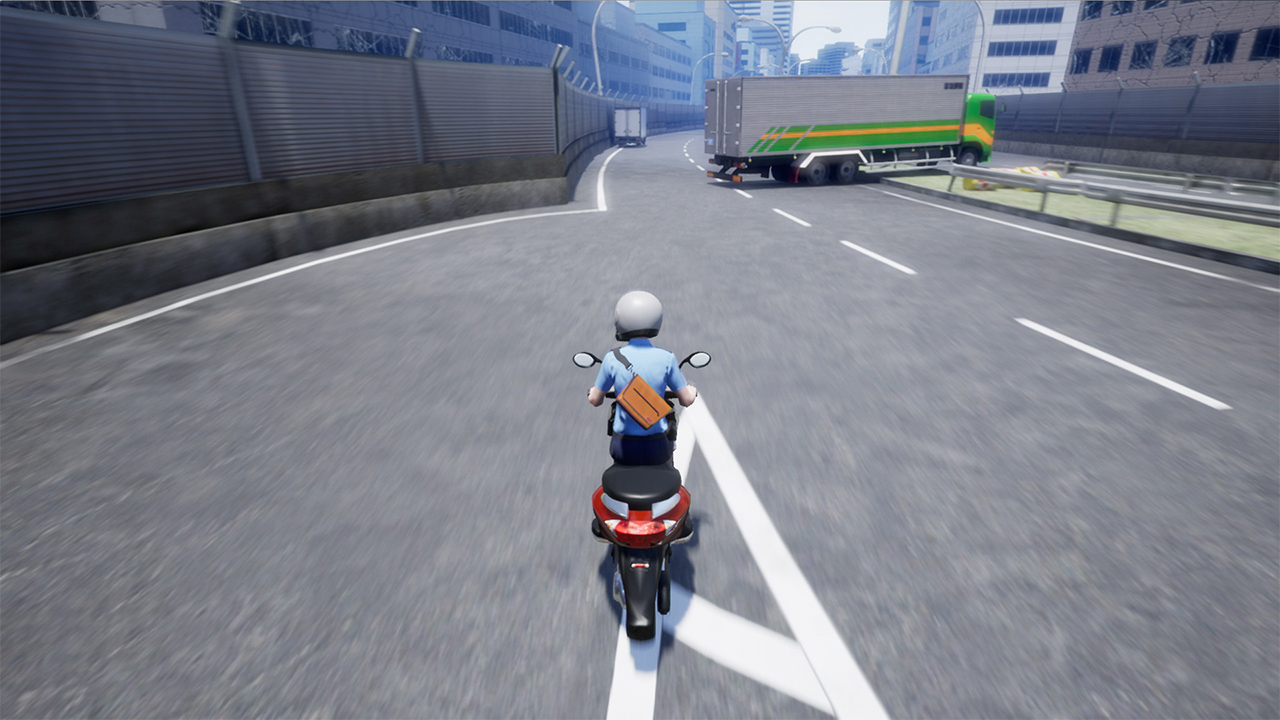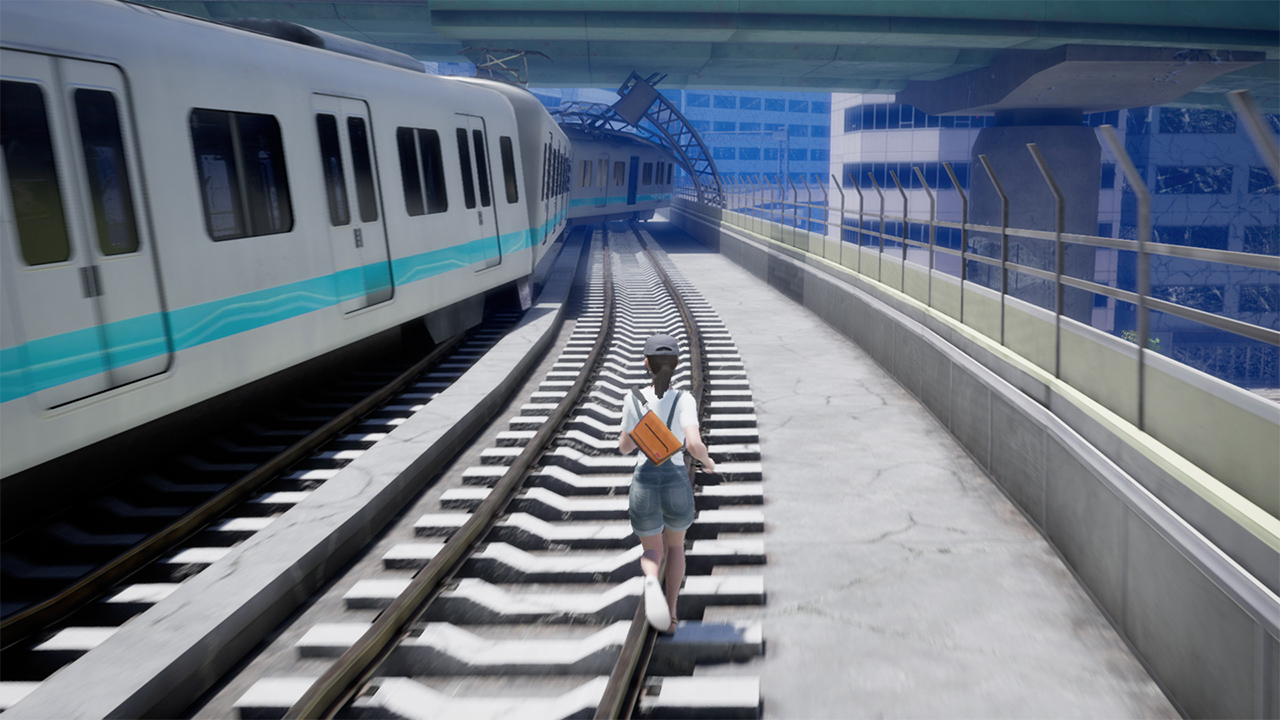[Review] Disaster Report 4: Summer Memories
Posted on April 4, 2020 by Dennis Gagliardotto(@LyonHart_) in Reviews, Switch
System: Switch
Release date: April 7, 2020
Developer: Granzella
Publisher: NIS America
Disaster Report 4: Summer Memories, the franchise’s first entry in the west in over a decade, puts players right down into a city that’s been struck by a 7.0+ magnitude earthquake that brings catastrophic damage over the area, injuring and trapping many people. Now with nowhere to go and everyone in hysterics, environmental awareness is key as you make your way to safety avoiding any other disasters that may come your way. Disaster Report 4 does well to set the tone and give players freedom of choice when it comes to helping others and doing what it takes to survive, but for everything it does well on the surface, it’s the performance that gets hit hardest, causing the Switch version to be a disaster of its own.
A faint tune of Jingle Bells rests in the background as you hear people talking to each other and discussing a range of things from philosophical mumblings to morale and honor codes, and then attention is brought upon you. “What do you think you’d do if you found yourself in a dangerous situation?” and a variety of responses from passerby show up one by one before you select the one you most identify with. From here on, you’ll be choosing between a male and female character to play as with some light customization choices, and once you finish with that, you’re transported onto a bus. Your character’s development and overall outcome is based upon the choices you make, and responses will almost always have some form of emotion to them that can change how you survive and those around perceive you, making them more or less willing to help in return.
It’s not long before things go awry when everyone’s phones start to get emergency warnings detailing the imminent earthquake, and shortly after as it happens the bus finds itself toppled over with other traffic. After a brief blackout, you come to your senses and crawl your way out of the totaled bus, looking around at the damage done to the buildings and people flustered. From here on you’re free to explore, getting as much detail as you can from others, helping those in need, and trying to find your way to safety.
Earthquakes happen sporadically throughout the game and when this happens you’ll need to duck and/or find cover. Just about anything is able to be destroyed, and I found myself in many situations thinking I was safe only to see a lamppost or sign fall mere inches from where I was standing, which could have been a fatal blow. Your health is heavily prioritized, and while you can easily go through the game without dying once, there’s no telling when or how hard an earthquake and aftershock may be. One could feel light, but as you’re running you could fall flat on your face if not careful. A variety of tools and equipment keep you going from myriad backpacks to increase your inventory to medkits for yourself and others, as well as other necessities like money, food, and water. A status screen indicates your stress levels and any intense hunger you may feel, or even the need to go to the bathroom. Neglecting all of these causes your stress meter to go up and can affect your health and ability to think clearly.
Disaster Report 4 has multiple areas throughout its 8-12 hour playthrough that you’ll be traveling through, from subways to shoresides to urban and rural areas and more, and while each remains fairly small, being able to go around and talk to a bunch of people while scavenging for items outside and inside buildings is a cool thing to see. You’ll be viewing how everyone is handling the situation differently, as well as helping others that may have been caught in rubble or severely dehydrated. Lines form in any brave convenience store while others have been ransacked, and you also have the option of making the choices of approaching different situations with various outcomes.
Each action you take will grant a set amount of moral points – and, conversely, immoral points – that change scenarios as you proceed from location to location as well as the game’s ending. Due to travelling through multiple areas and dealing with various degrees of actions, danger, and other disasters, save points are put in key locations throughout, but typically there’s only one at a time. While you can explore, scavenge, and help others (if you so choose), a key component to Disaster Report 4’s gameplay is both situational and environmental awareness. Save locations also serve as rest points, so if your stress is high and you don’t have any way to properly compose yourself, your best bet is to return here safely to take a breather. No location ever feels too ambiguous, poorly designed, or stressful, though there’s no clear direction on where to go either. In a game like this I rather like that as everyone is in a state of panic and most areas have been severely damaged, causing any lack of formation, with the only to navigate outside of using your compass being street signs, kiosks and the sort, assuming they haven’t been destroyed or will be in an impending earthquake.
The most unfortunate thing about Disaster Report 4 is that the true disaster lies in its performance on Switch. The game initially released in Japan in 2018, and I played a bit of the Japanese version on PS4, which ran fine for the most part though it had its fair share of hiccups, but it was perfectly playable with the worst being textures taking a moment to load and sporadic pop-in. On Switch, resolution is lowered quite a bit, but it does so in a mostly tasteful way that still holds together the essence and detail of most of the environments, keeping things remaining in view and objects that should be seen fixed and unobstructed. Both handheld and TV modes look identical, so nothing is changing visually wherever you prefer to play, but this also applies to the performance aspect, of which there seems to be no remedy.
I tried to stay optimistic when I heard the game would be getting a Switch release alongside its western localization, but the demo in 2019 in the Japanese eShop didn’t do it any favors. Optimism went from excitement for my love of niche, weird games to lost hope as I would, at best, get 15 frames, if that, at a steady interval. Audio thankfully doesn’t feel super compressed and as previously stated the visuals, while clearly significantly lowered, remain acceptable, but the borderline unplayable nature (of which I still did my best to complete) can make things feel not only sluggish but a chore to play through. More affected areas such as collapsed buildings you have to crawl through with an inordinate amount of damage done from office buildings to medical facilities and more conventional local businesses make you worry for your life both in-game and out as you crawl one frame at a time and the Switch itself is screaming in the background from the fan on full-blast. These earthquakes become so immersive that you feel threatened in the real world from the potential bomb your Switch might turn into. Slowdown can become intense, and while you’re traversing through the various parts of Disaster Report’s disaster, unusually long and arbitrary load times occur from scene to scene as you run into various people all with their own voiced dialogue and sequence, but since this also all occurs in real-time, some scenes play out as if in slow motion, and god forbid it has one that includes an action sequence of running away from a falling building or a burst of flames you have to run away from. Adding even more animation to a world that, outside of the occasional debris from sporadic earthquakes, contains primarily static objects, just makes the whole package of Disaster Report fall apart more than it already has.
This is the case with everything, too, as you’ll notice right away when you’re creating your character in the beginning which contains nothing but a face with a basic black backdrop, getting a 360-degree view of your head at a rate that feels immensely poor, all the way to basic things like menus which can have input lag switching from tab to tab, and having items, which are basic PNGs in your inventory, take a moment to load as you inspect them solely to equip or attach. Loading is particularly noticeable on other platforms as well, but it’s especially bad here on Switch with everything feeling disruptive and ruining the overall flow of the game.
Lighting and shading is fine outside, but indoors can feel especially dark without a flashlight. You do get one, but it doesn’t visualize much in front, and any reflections you come across on the Switch version show up as some sort of weird blur. You can switch outfits in your equipment screen, but alternatively can do so in various rooms in a variety of places. What’s comical is having the option to “view in mirror” to see how you look, but all that shows up is a smeared blur that doesn’t form much of anything, let alone a reflection of your new look. Animations are basic and nothing special, but simple things like opening doors by comparison feel dated. It takes upwards of five to ten seconds to enter a room because of having to get into position once you interact with one, the screen going black briefly seemingly to prepare for a short cutscene, stiffly grabbing and pulling on the door, before entering in a robotic manner, having it close on its own behind you, and staying still for an additional two seconds before you’re in control again. Collectibles can be found in multiple places, so I would always dread anything that wasn’t in an open space. The process is slow enough and having to do it in an unstable manner barely hitting 15 frames per second is painful to experience – I almost want to be caught under the bridge across the street.
I always appreciate a game with a unique take on some sort of unfortunate, somewhat “post-apocalyptic” situation requiring survival and wit even if they don’t end up being particularly good – games like I Am Alive, Submerged, AMY, Deadlight, Die Young, and The Forest – but the problem with a lot of them is you’re already in the midst of experiencing the aftermath and just about every single time you’re dealing with some sort of infection, mutation, or undead plague. Disaster Report 4 has you in here as it happens, and while everyone is in hysterics, society hasn’t collapsed nor are there sudden factions and claims on territory. Nothing supernatural is here, and everything is, for the most part, authentic and how you would expect a natural disaster to be and how it affects those it impacts. No one’s gone feral as this is the year 20XX, and natural disasters are also nothing new to anyone regardless of what part of the world they’re in – you and I included. A lot of these games go 0 to 400 so fast with everyone losing common sense the moment a car flips or a stop sign falls over and start cannibalizing each other it baffles me more often than not, but I get it’s a way to design and tell the player “if you see those crazy people, shoot them”. There are still some signals able to be reached with phones, up-to-date news on the situation at hand instead of the cliché “phone’s don’t work, there’s no internet, and now I’m fending for myself and need to skin a bear”. It’s refreshing to see Disaster Report 4 almost be a “simulator” of sorts, for lack of a better way of putting it, while having a decent game there even if it does feel dated. What makes this a hard no, however, it that the Switch was clearly caught in the crossfires of this unfortunate event, and as it stands (or doesn’t) it should have no business being here. All there is to report here is an utter disaster.
The Verdict

Disaster Report 4 is by no means a bad game, but Switch’s borderline unplayable performance and technical mishaps make it a sluggish trek through what would otherwise be a decently immersive experience on other platforms. With the way it runs it would have been better off not being on the Switch at all, and while it’s not to the level of the infamous WWE 2K18 or Troll & I, it adds itself to the list of games that I like to call “failed attempts” on the hybrid system. I wish we had more games like Disaster Report in general, something that found itself in detailed landscapes with a unique premise that came with unorthodox, experimental gameplay, and even with the series’ almost twenty year history there still really hasn’t been anything quite like it. It’s certainly not for everyone, however, and it may even be a little too “Cult B-Film” for a lot of people, but as we’re focusing on the Switch version of Disaster Report 4, this should be avoided. While I remained hopeful that things would be improved from the demo by the time the North American release came to light, the Switch version still remains a disaster port.
Review copy provided by the publisher for the purposes of this review.



